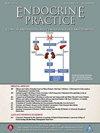Impact of the Addition of Beta-Hydroxybutyrate in the 72-Hour Fast Protocol on Hospitalization Duration: A Quality Improvement Report
IF 3.7
3区 医学
Q2 ENDOCRINOLOGY & METABOLISM
引用次数: 0
Abstract
Objective
The 72-hour fast is the “gold standard” test for detecting insulinoma but imposes significant burdens on patients and expends hospital resources. Balancing diagnostic accuracy with patient comfort and cost remains challenging. We aimed to leverage the metabolic indicator beta-hydroxybutyrate (BHB), indicative of insulin suppression, to curtail inpatient fasting time without missing insulinoma cases.
Methods
Our institution implemented an inpatient 72-hour fast protocol in 2018, and updated the protocol in 2020 to include a BHB >2.7 mmol/L stopping criterion. In this quality improvement and patient safety project, we retrospectively reviewed all patients who completed a 72-hour fast at our institution by the original (January 2018 to June 2020) and updated (June 2020 to December 2022) protocols.
Results
Sixty-four patients (78% female, mean age 48 ± 17 years) underwent fasting: 34 patients by the original protocol and 30 patients by the revised protocol. The original protocol had an average fast duration of 57.6 hours (median 72 hours, IQR [49,72]). After the update, 50% (N = 15) ended for BHB >2.7 mmol/L, with an average fast duration of 49.7 hours (median 53 hours, IQR [39.1, 71.8], P = .03). This reduced cumulative inpatient fasting by 376.5 hours and reduced medical costs. All insulinoma cases (N = 7) developed hypoglycemia within 43 hours with BHB ≤1.2 mmol/L; no cases were missed.
Conclusion
Adding a BHB >2.7 mmol/L stopping criterion reduced inpatient hospitalization time, medical costs, and patient burden without compromising insulinoma detection. This evidence-based intervention improves patient adherence and more effectively uses hospital resources.
72小时快速方案中加入β -羟基丁酸对住院时间的影响:一项质量改善报告
目的:72小时禁食是检测胰岛素瘤的金标准试验,但给患者带来了巨大的负担,耗费了医院资源。平衡诊断准确性与患者舒适度和成本仍然具有挑战性。我们的目的是利用代谢指标β -羟基丁酸酯(BHB),指示胰岛素抑制,减少住院患者的禁食时间,而不会遗漏胰岛素瘤病例。方法:我院于2018年实施了住院患者72小时禁食方案,并于2020年更新了方案,纳入了BHB >2.7 mmol/L停药标准。在这个质量改进和患者安全项目中,我们回顾性地回顾了根据原始(2018年1月至2020年6月)和更新(2020年6月至2022年12月)协议在我们机构完成72小时禁食的所有患者。结果:64例患者(78%为女性,平均年龄48±17岁)禁食:34例患者采用原始方案,30例患者采用修订方案。原始方案的平均快速持续时间为57.6小时(中位数为72小时,IQR[49,72])。更新后,50% (N=15)患者以BHB >2.7 mmol/L结束治疗,平均快速持续时间为49.7小时(中位数为53小时,IQR [39.1, 71.8], p=0.03)。这减少了累计住院禁食376.5小时,并降低了医疗费用。7例胰岛素瘤患者均在43小时内发生低血糖,BHB≤1.2 mmol/L;无遗漏病例。结论:在不影响胰岛素瘤检测的情况下,增加bhb2.7 mmol/L停用标准可减少患者住院时间、医疗费用和患者负担。这种基于证据的干预措施提高了患者的依从性,并更有效地利用了医院资源。
本文章由计算机程序翻译,如有差异,请以英文原文为准。
求助全文
约1分钟内获得全文
求助全文
来源期刊

Endocrine Practice
ENDOCRINOLOGY & METABOLISM-
CiteScore
7.60
自引率
2.40%
发文量
546
审稿时长
41 days
期刊介绍:
Endocrine Practice (ISSN: 1530-891X), a peer-reviewed journal published twelve times a year, is the official journal of the American Association of Clinical Endocrinologists (AACE). The primary mission of Endocrine Practice is to enhance the health care of patients with endocrine diseases through continuing education of practicing endocrinologists.
 求助内容:
求助内容: 应助结果提醒方式:
应助结果提醒方式:


